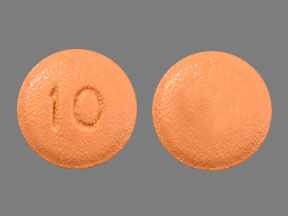Uptravi Side Effects
Generic name: selexipag
Medically reviewed by Drugs.com. Last updated on Feb 11, 2025.
Note: This document provides detailed information about Uptravi Side Effects associated with selexipag. Some dosage forms listed on this page may not apply specifically to the brand name Uptravi.
Applies to selexipag: oral tablet.
Other dosage forms:
Common side effects of Uptravi
Some side effects of selexipag may occur that usually do not need medical attention. These side effects may go away during treatment as your body adjusts to the medicine. Also, your health care professional may be able to tell you about ways to prevent or reduce some of these side effects.
Check with your health care professional if any of the following side effects continue or are bothersome or if you have any questions about them:
More common side effects
Serious side effects of Uptravi
Along with its needed effects, selexipag (the active ingredient contained in Uptravi) may cause some unwanted effects. Although not all of these side effects may occur, if they do occur they may need medical attention.
Check with your doctor immediately if any of the following side effects occur while taking selexipag:
Incidence not known
- blue lips and fingernails
- chest pain
- coughing that sometimes produces a pink frothy sputum
- difficult, fast, noisy breathing
- increased sweating
- pale skin
- swelling in the legs and ankles
For healthcare professionals
Applies to selexipag: intravenous injection, oral tablet.
General adverse events
The most frequently reported side effects included headache, diarrhea, jaw pain, nausea, myalgia, vomiting, pain in extremity, and flushing.[Ref]
Gastrointestinal
- Very common (10% or more): Diarrhea (up to 42%), nausea (up to 34%), vomiting (up to 18%)
- Common (1% to 10%): Abdominal pain, dyspepsia, abdominal discomfort
- Frequency not reported: Ascites[Ref]
Cardiovascular
- Very common (10% or more): Flushing (up to 12%), sinus tachycardia (up to 11.3%)
- Common (1% to 10%): Hypotension
- Frequency not reported: Hot flush
- Postmarketing reports: Symptomatic hypotension[Ref]
Dermatologic
Endocrine
- Common (1% to 10%): Hyperthyroidism, thyroid stimulating hormone decreased[Ref]
Hematologic
Local
- Frequency not reported (injection): Infusion-site reactions (erythema, redness, pain, swelling)
Metabolic
- Common (1% to 10%): Appetite decreased[Ref]
Musculoskeletal
- Very common (10% or more): Jaw pain (26%), pain in extremity (up to 17%), myalgia (up to 16%), arthralgia (up to 11%)
- Common (1% to 10%): Musculoskeletal pain, neck pain
- Frequency not reported: Bone pain[Ref]
Nervous system
- Very common (10% or more): Headache (up to 65%)
- Frequency not reported: Burning sensation[Ref]
Ocular
- Common (1% to 10%): Eye pain, retinal disorder[Ref]
Oncologic
- Common (1% to 10%): Malignancy[Ref]
Other
Renal
- Frequency not reported: Acute renal failure
Respiratory
- Very common (10% or more): Nasopharyngitis (13%)
- Common (1% to 10%): Nasal congestion
- Frequency not reported: Pulmonary veno-occlusive disease[Ref]
References
1. Cerner Multum, Inc. "UK Summary of Product Characteristics."
2. Cerner Multum, Inc. "Australian Product Information."
3. (2016) "Product Information. Uptravi (selexipag)." Actelion Pharmaceuticals US Inc
Frequently asked questions
More about Uptravi (selexipag)
- Check interactions
- Compare alternatives
- Pricing & coupons
- Reviews (27)
- Drug images
- Dosage information
- During pregnancy
- Generic availability
- FDA approval history
- Drug class: agents for pulmonary hypertension
- Breastfeeding
- En español
Patient resources
- Uptravi drug information
- Uptravi (Selexipag Intravenous) (Advanced Reading)
- Uptravi (Selexipag Oral) (Advanced Reading)
Professional resources
Related treatment guides
Further information
Uptravi side effects can vary depending on the individual. Always consult your healthcare provider to ensure the information displayed on this page applies to your personal circumstances.
Note: Medication side effects may be underreported. If you are experiencing side effects that are not listed, submit a report to the FDA by following this guide.

